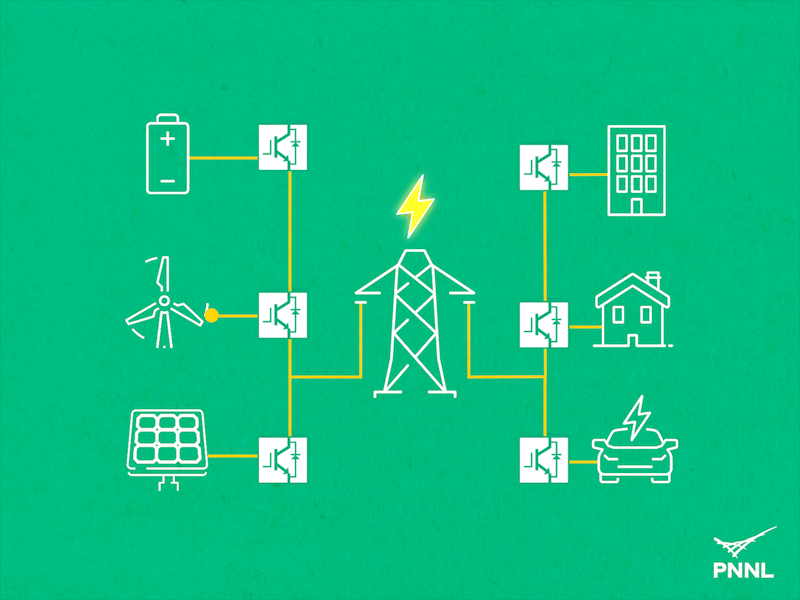E-COMP Value Proposition
The E-COMP Initiative is addressing the rapidly evolving energy system challenges driven by technological advancements and shifts in system architecture. As the energy landscape transitions, up to 80% of all electricity is predicted to flow through systems dominated by power electronics within the next 10 to 15 years. These changes present unprecedented design and operational complexities that jeopardize the ability to meet critical objectives like grid modernization, reliability, and cost-effectiveness.

Why E-COMP Matters
E-COMP is advancing science and technology to enable optimized design and operation of energy systems dominated by power electronics. Traditional approaches to system design and operation, which rely on outdated theories and methods, are increasingly inadequate. Issues such as unexplained instabilities, propagation of faults, and inefficiencies highlight the urgent need for innovative solutions. E-COMP addresses these gaps through:
- Advanced Modeling and Simulation: Developing tools to characterize the behavior of interconnected power electronics-dominated energy systems, enabling better decision-making.
- Co-Design Frameworks: Creating algorithms for multi-objective, multi-timescale optimization to guide cost-effective infrastructure investments and operations.
- Simulation Platforms: Studying localized design impacts on broader systems using multi-entity simulation tools.
Real-World Applications
E-COMP grounds its research in practical use cases that demonstrate the applicability of its tools and solutions. Two main categories being explored are:
- Integration of large generation or large loads into existing infrastructure for stable, reliable, and affordable design and operation. One specific use case in this category is the interconnection of large new generation/load integration into the Western Electricity Coordinating Council (WECC) existing system where E-COMP tools were used to model, simulate, and optimize the design and operation of these future systems to enhance resiliency and efficiency.
- Optimizing the design and operation of community-scale energy infrastructure and resources. This category of use cases involves multiple stakeholders and distributed resources and decision-making. For example, E-COMP is focused on Washington State's Olympic Peninsula, which is a region prone to outages and limited by contractual and technical constraints. E-COMP’s multi-entity simulation platform enables stakeholders to evaluate the trade-offs of different investment decisions to improve resilience.
E-COMP’s Unique Approach
E-COMP adopts a holistic approach to energy system transformation by:
- Addressing dynamic interactions and stability in systems with diverse power electronics technologies.
- Bridging the gap between infrastructure design and operational control decisions.
- Providing foundational science for optimizing design and operations to achieve multiple objectives simultaneously.
Key Capabilities
E-COMP is developing distinct, multidisciplinary capabilities to:
- Characterize and model stability boundaries and dynamics of power electronics-dominated systems.
- Enable co-optimization of infrastructure investments and operations.
- Evaluate entity-level optimization impacts on broader systems through multi-entity simulation.
By leveraging PNNL’s expertise across domains like power systems, controls, and optimization, E-COMP is uniquely positioned to provide scalable, impactful solutions. This initiative is designed to anticipate and resolve the challenges posed by high penetration of power electronics devices, ensuring the energy system’s reliability, resilience, efficiency, and modernization as it evolves.
Strategic Impact
E-COMP positions PNNL as a leader in the transformation of energy systems by creating enduring solutions that balance efficiency, cost, and reliability. This initiative aligns closely with the U.S. Department of Energy’s resilience goals while addressing system-level challenges. By focusing on stakeholder engagement and policy-relevant insights, E-COMP contributes to a secure, resilient energy future.
E-COMP’s pioneering work ensures that the energy systems of tomorrow are equipped to meet the diverse demands of an interconnected, electrified world while achieving national energy goals.